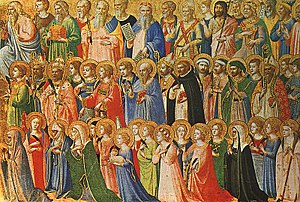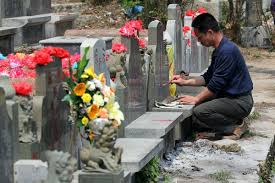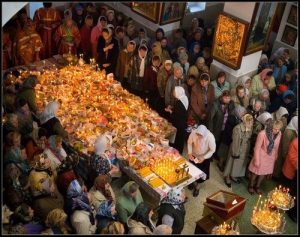There are many other celebrations of death around the world that come from all cultures. Some popular rituals include:
ALL SAINTS AND ALL SOUL’S DAY

All Saint’s Day is celebrated on November 1st in Roman Catholic Churches. This celebration honours all of the Saints who have entered into heaven, originating from the belief in the spiritual connection between those on Earth and Heaven. On this day, Catholics are expected to attend Mass where the Beatitudes (eight blessings recounted in Jesus’ Sermon on the mountain) are read. Afterward, offerings such as flowers are left on relatives graves with lit candles.
All Soul’s Day follows the day afterward on November 2nd. “All Soul’s” refers to celebrating the souls in Purgatory, otherwise known as an intermediate state after physical death for expiatory purification. On this day, individuals are expected to say extra prayers to help the departed enter Heaven and spend time at graves of relatives.
QINGMING “Tomb Sweeping Day“

Qingming, also known as “Tomb Sweeping Day,” falls between April 4th and April 6th annually. Dating back to 636 B.C., this Chinese custom is meant for reflection and to mourn those who have passed by cleaning their tomb site, and placing offerings for use in the afterlife. Joss paper, flowers, or pictures of luxury items are common offerings. Firecrackers are also offered in order to ward away the evil spirits in the afterlife.
Qingming is not only about honouring the dead, but symbolically held at the beginning of spring is also to celebrate life, and renewal. Part of the celebration involves activities outdoors participating in picnics, flying kites, and sharing stories of their loved ones who have passed.
RADONITSA

Radonitsa, also known as the “Day of Rejoicing,” is celebrated by the Russian Orthodox Church to commemorate those who have died, and remember them. It is held on the second Tuesday of Pascha, which is also known as Easter Sunday.
On this day in the Church, the priest will hold a sermon where he afterward blesses the paschal food that the visitors have brought. The clergy will begin a procession through cemeteries & graveyards holding incense, followed by family or visitors. The visitors will then chant hymns together and feast in the graveyard, remembering joyous times. Paschal foods include kulichi, pancakes, drachini and honey prianiki. An Easter egg is symbolically placed on graves of the departed to announce the Resurrection of Christ to the departed.
ADDITIONAL CELEBRATIONS OF DEATH